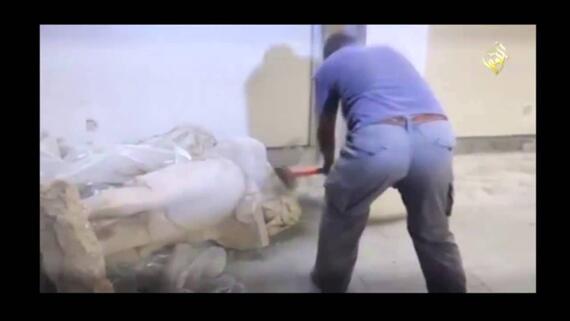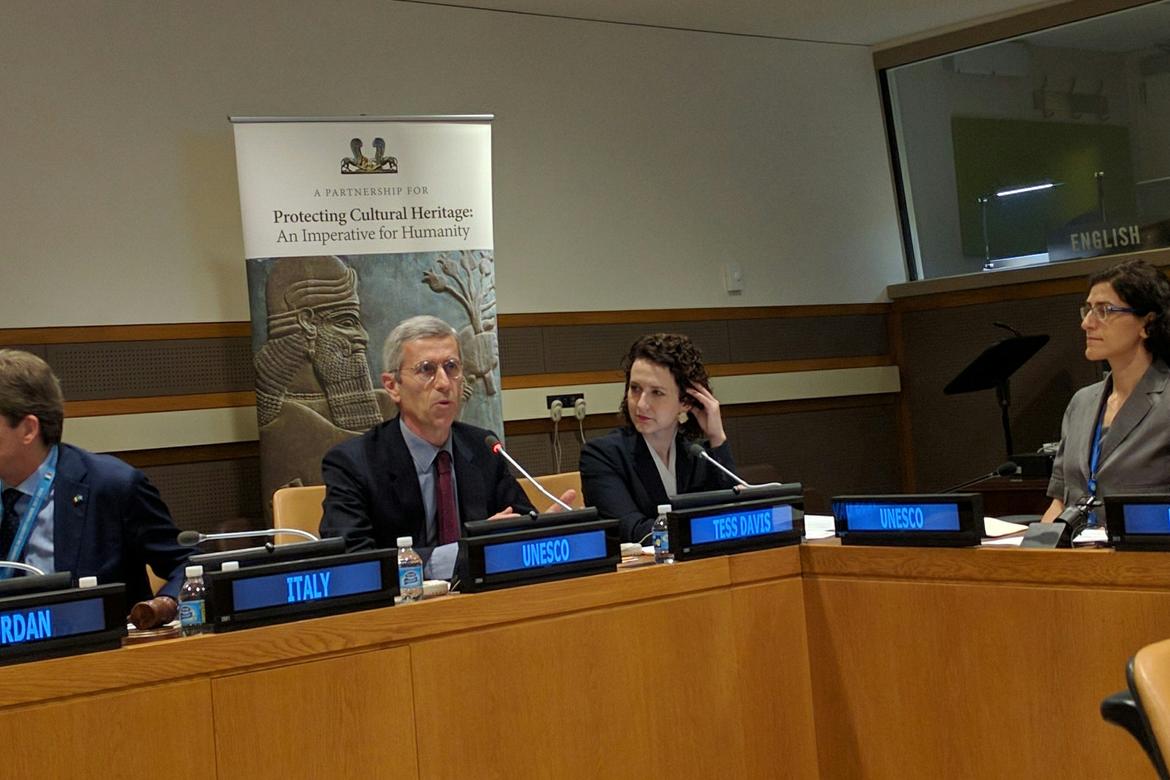Responding to Heritage Destruction in Conflict

On Friday, May 27, I represented WMF at the third and final meeting of "Protecting Cultural Heritage – an Imperative for Humanity," an initiative led by the governments of Italy and Jordan, held at the United Nations Headquarters in New York. The conference room was packed, with over a hundred leaders in heritage protection and a dozen international government delegations meeting to decide if and how artifacts and historic sites in countries like Syria and Iraq can be protected.
The report is due in September, but there seems to be a general acceptance that the battle most easily won is against trafficking in stolen antiquities from conflict regions. Most of the discussions put the front lines of that battle in the countries of final sale, rather than directly attacking the looting at source. Destruction of historic sites was a far smaller part of the discussion, with out-of-country actions—international legal frameworks and more advance planning for disaster—being highest on the agenda.
It is widely accepted that destruction of historic sites in regions like Syria, Iraq, and Libya is largely uncontrollable in-country. Each country is a partial war zone, with important sites spread across tens of thousands of square miles of remote landscape. Those sites and their artifacts have become symbolic targets, sources of financing, and accidental casualties. At this point, protecting them from all three is largely beyond the reach of international governments, lawyers, soldiers, or archaeologists. The main concern with this acceptance, and perhaps one that cannot be addressed, is that it leaves local experts working to protect their own heritage with far too little support.
During the panel, there were repeated calls to build local stakeholders into the process early, and details were often cited from one marked success, in Mali, where heritage was included as a specific part of the peacekeeping process.
My presentation focused on future threats that we can address now, threats that are potentially far more damaging than the predations of looters and DAESH.
Because of conflict, millions of people have left their homes, and children are growing up never knowing the places that help define them as a people. We are losing a generation of citizen caretakers who would understand and protect their historic environment—a break in generations of continuity that will be very difficult to rebuild. More than ever, after the conflict, heritage will need champions, and people will need a stronger connection to their past to rebuild a peaceful future.
I suggested that one of the most important things we can do to address this is to continue to develop and invest in models for supporting cultural identity in exile, particularly amongst children.
Once peace is declared, billions of dollars will pour into war-torn countries. As is right, the focus will be on humanitarian relief, not heritage—schools, hospitals, power stations, and roads will be built as quickly as possible. Decades of development pressure will be focused in a few years.
Syria in particular has an amazing group of heritage professionals, but they will be overwhelmed and often powerless in the face of the scale of investment. The heritage that is most significant for preserving the identity of a place is often the background web of domestic spaces and street patterns, not the grand monuments, which will be the focus of attention.
I urged those present to use the time we have now to prepare for reconstruction, to use the tools we have at our disposal to gather as much detail about the historic fabric in as many communities as possible. We should be prepared to give locals the information and the power they need to make decisions and agree to provide the space for those decisions in the rush to rebuild.

